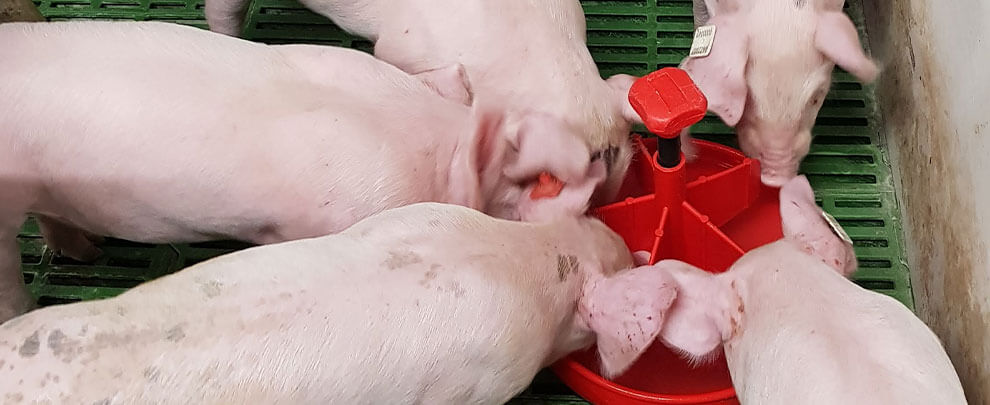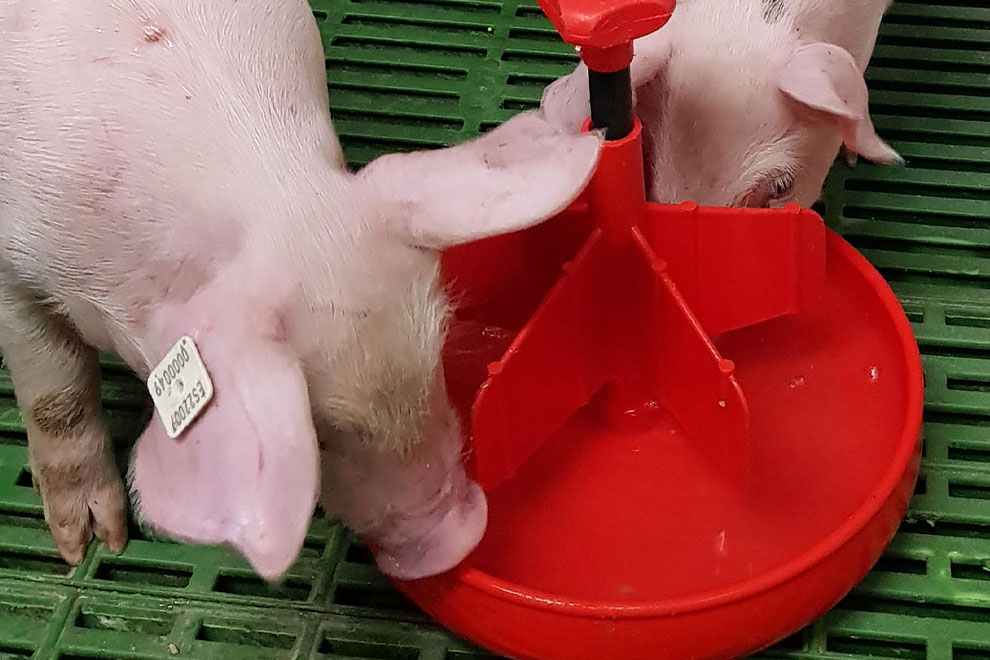Blog
Blog

Advantages of feeding piglets with dry lactoinitiator feed
09th January 2020 - Studies
Josep Rius. Rotecna Technical Department
The objective of applying creep feeding techniques (supplementing the food of suckling piglets with feed), is to get them to start eating solid feed as soon as possible. This will produce more homogeneous piglets with higher weights, and most important, that can better adapt to the delicate weaning phase.
BENEFITS OF CREEP FEEDING
- It favours the adaptation of the piglets to weaning, as if they have eaten feed during the suckling period, the latency period (the time between weaning and the first intake of feed) is reduced and hence, the post-weaning weight loss, making it possible to prevent loss of appetite and anorexia situations.
- It stimulates maturity and the enzymatic capacity of the piglet's digestive system, thus preventing diarrhoea and favouring the digestion of starch and protein, and adaptation to the transition from a liquid milk-based diet to a solid diet of plant origin.
- It improves piglet productivity, as it accelerates their growth and reduces heterogeneity during suckling and the first weeks after weaning.
- It reduces the mortality of suckling piglets.
- It supplements the absence of the mother’s milk by partly covering the growth needs of the piglet, particularly in the case of the smallest ones.
- It improves the bodily condition of the sows at the end of the suckling period (especially in weaning periods of 28 days), increasing their fertility potential.
MANAGEMENT TIPS
The best option would be to offer feed at an early age, and for the piglets to eat it. However, it is no easy task to get them to eat. Regardless of the characteristics of each farm, there are general guidelines that can be applied:
- To start with, offer a small quantity of feed (50 g/litter) and often (3 times a day).
- If they finish it between each feeding session, clean the dish and give them more.
- If they do not finish it between each feeding session, remove it, clean the dish and replenish with fresh feed. Never throw fresh feed onto old feed, as it could be soiled and lose its palatability and aroma.
- Then increase the quantity of food offered as the appetite of the piglets increases.
- It is very important that the dishes are easy to transport, put in place and remove, in order to keep them clean and dry.
- Place the dishes at a distance from heat sources, corners and the sow. Whenever possible, they must not be near the place where the sow urinates and defecates, to prevent splashing and droppings adhered to the legs of the sow from being transferred to the dish. A good location is near the sow’s feeding trough, so that the piglets can imitate the behaviour of their mother at feeding time. It is also a good idea to put the dish near a drinking trough installed for the piglets.
- Offer the feed when the piglets are awake, to arouse their curiosity. It is important for them to see the operator handing the dish or throwing in the feed.
- The feed must be stored tightly closed in a cool, dry place to ensure it conserves all its nutritive and sensory properties.

If access to water is improved, feed consumption increases. Photo: Rotecna.
PIGLET WATER CONSUMPTION IN THE FARROWING PENS
The water content for a newborn piglet is around 80 % of its body weight. A water loss of just 10-15 % can cause death due to dehydration.
On birth, a piglet consumes water through its mother's milk (which has a proportion of water of 80 %). However, it is well known that not all newborn piglets have the same opportunities of suckling and consuming the necessary quantity of milk for their correct development. In such cases, a water deficit reduces their appetite and has a direct effect on the development of diseases such as diarrhoea, cystitis, oedema and others. Furthermore, as the piglets grow and are given lacto-initiator feed, the water consumption stimulates the intake of dry feed and thus ensures their correct adaptation after weaning.
Many studies show that when access to water is improved, the feed intake increases and that the quantity of feed eaten by the piglet depends on the quantity of water it drinks.
HOW TO SATISFY THE PIGLET'S WATER NEEDS?
- Type of drinking trough: bowl-type drinking troughs are much more effective that nipple-type ones, as the latter are more difficult for the piglets to find and use.
- Drinking trough location: near the piglets’ comfort area, and also near the dish where the feed is placed. A water flow rate of 300 ml/minute is recommended, and bowl-type drinking troughs must be placed at a height of between 5-8 cm from the ground.
FACTORS THAT INFLUENCE WATER CONSUMPTION
- Room temperature.
- The sow's capacity to produce milk.
- Water temperature and quality.
- Quality of the lacto-initiators.
- Need to evaporate water from the lungs (directly related to the room temperature).
- Piglet stress level.
- Number of drinking troughs, their position and the water flow rate.
- Sanitary conditions.
PRACTICAL TIPS FOR INCREASING WATER CONSUMPTION
- Facilitate access to water by providing an additional dish (such as the feed dish) filled with water from the day of birth.
- Add a palatability enhancer to the water.
WATER MANAGEMENT
- Daily cleaning (as often as required) of bowl-type drinking troughs and supplementary dishes, and checking of their correct operation.
- Checking of the water flow rate and its adjustment to the age/needs of the piglets.
- Regular water analyses.
- Consumptions of 100/200 ml/day/piglet are recommended.






